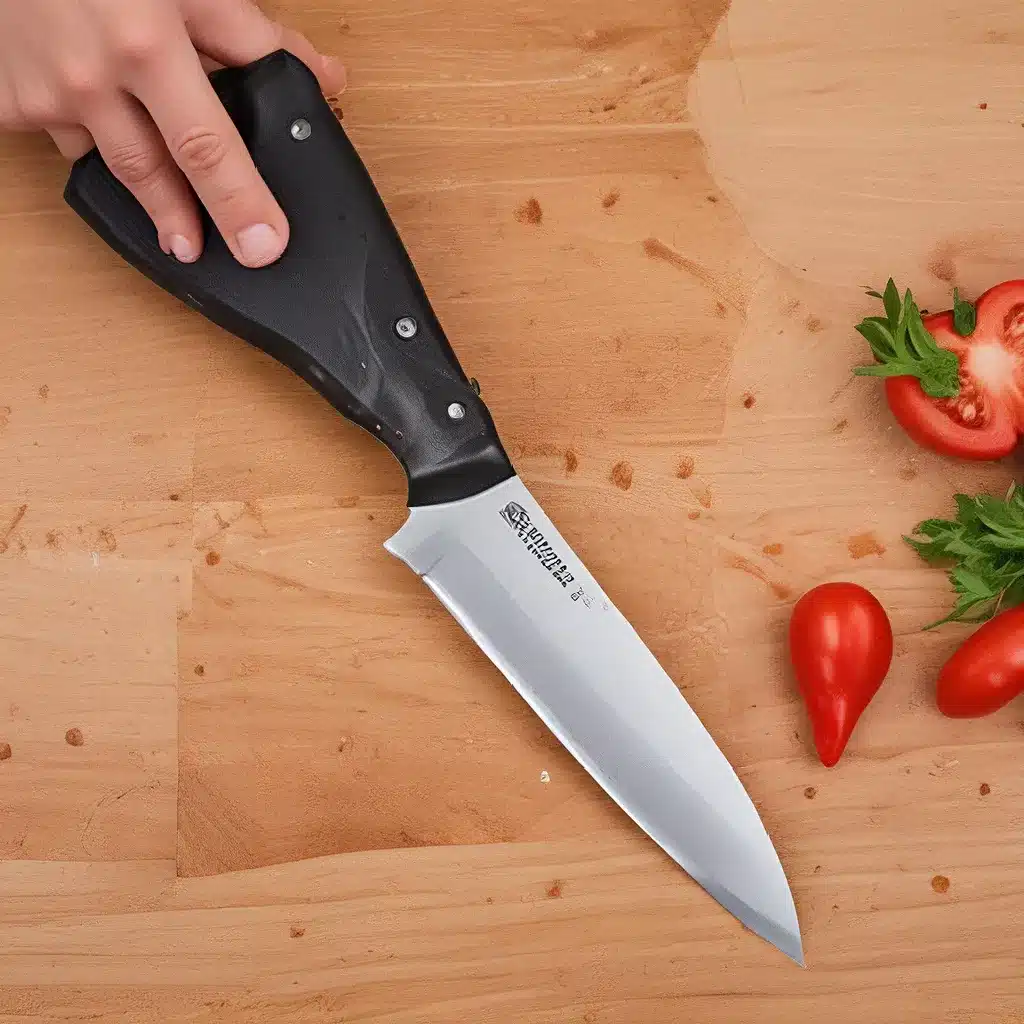
As a passionate home cook and devoted knife enthusiast, I’ve spent countless hours in the kitchen, meticulously preparing delectable meals for my family and friends. However, I’ve also experienced the all-too-familiar aches and pains that can come with prolonged culinary endeavors – the nagging back strain, the sore wrists, and the fatigue that slowly creeps in with each repetitive motion.
But what if I told you there’s a solution to this common kitchen conundrum? It’s called culinary ergonomics, and it’s the key to unlocking a world of comfort, efficiency, and joy in the kitchen.
The Importance of Ergonomics in the Kitchen
Ergonomics is the science of designing products, environments, and systems to fit the people who use them. In the kitchen, this principle is particularly crucial, as we’re often engaged in tasks that demand precision, speed, and endurance under less-than-ideal conditions.
According to experts, effective kitchen layout, well-designed tools, and ergonomic features can significantly reduce strain, fatigue, and the risk of injury for both professional chefs and home cooks alike. By prioritizing ergonomics, we can create a more comfortable, efficient, and sustainable working environment in the kitchen.
Identifying Ergonomic Challenges in the Kitchen
To truly appreciate the power of culinary ergonomics, let’s first explore some of the most common ergonomic challenges faced in the kitchen:
-
Repetitive Motions: From chopping, slicing, and dicing to whisking, stirring, and kneading, the kitchen is a hotbed of repetitive tasks that can lead to wrist, hand, and arm strain.
-
Prolonged Standing: Many kitchen tasks require us to stand for extended periods, which can result in back pain, leg fatigue, and overall discomfort.
-
Awkward Postures: Reaching for high shelves, bending over cutting boards, and hunching over sinks can all contribute to neck, shoulder, and back pain.
-
Heavy Lifting: Carrying heavy pots, lifting large food items, and maneuvering bulky equipment can put a strain on our bodies and increase the risk of injury.
-
Insufficient Workspace: Cramped, cluttered, or poorly designed kitchen layouts can force us to work in uncomfortable positions and make it difficult to move efficiently.
By understanding these common ergonomic challenges, we can begin to implement targeted solutions that will transform our kitchens into comfortable, efficient, and safe workspaces.
Principles of Ergonomic Kitchen Design
Designing an ergonomic kitchen is not just about making it look pretty – it’s about creating a space that supports the well-being and productivity of its users. Here are some key principles to keep in mind:
-
Workflow Optimization: Arranging workstations, equipment, and storage areas in a logical, efficient manner to minimize unnecessary movements and improve workflow.
-
Adjustable Heights: Ensuring that work surfaces, cutting boards, and other tools can be adjusted to the optimal height for each user, reducing strain on the back, shoulders, and neck.
-
Ergonomic Tools: Selecting knives, utensils, and other kitchen implements with comfortable handles, intuitive controls, and features that minimize the risk of repetitive strain injuries.
-
Anti-Fatigue Mats: Providing supportive, anti-fatigue mats in high-traffic areas to alleviate the strain of prolonged standing.
-
Proper Lighting and Ventilation: Ensuring the kitchen is well-lit and properly ventilated to create a comfortable working environment and reduce the risk of eye strain and respiratory issues.
By incorporating these ergonomic principles into kitchen design, we can create spaces that not only look great but also feel great to work in, allowing us to cook with greater comfort, efficiency, and joy.
The Role of Ergonomic Assessments
While the principles of ergonomic kitchen design provide a solid foundation, the real magic happens when we conduct thorough ergonomic assessments. These evaluations involve a comprehensive analysis of the kitchen environment, identifying potential risks and pinpointing areas for improvement.
Ergonomic assessments typically involve a combination of observational analysis, biomechanical measurements, and user feedback to uncover the unique ergonomic challenges within a specific kitchen. This information is then used to develop customized solutions that address the specific needs of the space and its users.
But what if I told you there’s an even more advanced approach to these ergonomic assessments? Enter TuMeke, a revolutionary technology that’s poised to transform the way we evaluate and optimize kitchen ergonomics.
Revolutionizing Ergonomic Assessments with TuMeke
TuMeke’s cutting-edge computer vision technology takes ergonomic assessments to the next level. By leveraging advanced sensors and algorithms, this innovative system can precisely analyze the movements and postures of kitchen workers, identifying potential risk factors and suggesting targeted interventions to improve comfort and efficiency.
What sets TuMeke apart is its ability to provide real-time, objective feedback on ergonomic performance, allowing kitchen professionals to make data-driven decisions and implement effective ergonomic solutions. Gone are the days of relying on subjective observations or manual measurements – with TuMeke, the process of enhancing kitchen ergonomics becomes streamlined, efficient, and accessible to everyone.
Imagine a world where your kitchen is not just a place of culinary creativity, but a space that actively supports your well-being and productivity. With TuMeke’s transformative technology, this vision can become a reality.
Embracing the Ergonomic Revolution in the Kitchen
As the culinary world embraces the power of ergonomics, I’m excited to see what the future holds. By prioritizing the comfort and efficiency of kitchen professionals, both in commercial and home settings, we can create environments that foster creativity, productivity, and a genuine love for the craft of cooking.
So, the next time you find yourself slicing, dicing, and sautéing in the kitchen, remember the importance of ergonomics. Explore the Herman Knives collection, designed with comfort and efficiency in mind, and consider integrating TuMeke’s revolutionary technology into your kitchen workflow.
Ergonomics is more than just a buzzword – it’s a transformative approach that can elevate your culinary experience, one delicious meal at a time. Embrace the ergonomic revolution and start cooking up comfort in your kitchen today!


